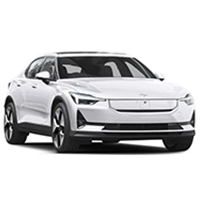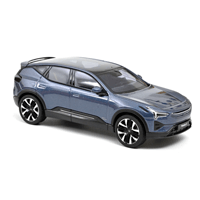
Catalog / Polestar
Polestar: Swedish Electric Performance Redefining Luxury and Sustainability
Polestar, a Swedish premium electric vehicle manufacturer, has rapidly emerged as a significant player in the automotive industry, blending Scandinavian design with cutting-edge electric technology. The company's journey began in 1996 when it was founded as Flash Engineering, a racing team in the Swedish Touring Car Championship. In 2005, it was acquired by Volvo Cars and renamed Polestar Racing.
A pivotal moment came in 2015 when Volvo acquired 100% of Polestar, transforming it from a racing team and performance arm into a distinct electric vehicle brand. This strategic move positioned Polestar at the forefront of the electric vehicle revolution. In 2017, Polestar was established as a standalone electric performance car brand, co-owned by Volvo Cars and its parent company, Geely Holding.
Polestar's first production model, the Polestar 1, was unveiled in 2017. This limited-edition plug-in hybrid grand tourer showcased the brand's commitment to high-performance electrification. With only 1,500 units produced over three years, the Polestar 1 quickly became a collector's item.
In 2019, Polestar introduced its first all-electric vehicle, the Polestar 2. This fastback sedan marked the brand's transition to a fully electric lineup and competed directly with other premium electric vehicles like the Tesla Model 3. The Polestar 2 gained recognition for its minimalist Scandinavian design, advanced infotainment system powered by Android Automotive OS, and impressive performance.
Polestar has continued to innovate and expand its lineup. In 2022, the company launched the Polestar 3, its first electric performance SUV, showcasing the brand's evolution and its ability to compete in multiple vehicle segments. The Polestar 3 features advanced technologies, including LiDAR sensors for enhanced safety and autonomous driving capabilities.
One of the most interesting aspects of Polestar is its commitment to sustainability. The company has set ambitious goals to create a truly climate-neutral car by 2030 through its 'Polestar 0' project. This initiative involves reducing emissions across the entire supply chain and production process, not just offsetting them.
Polestar's innovative approach extends to its sales model as well. The company primarily operates through an online direct sales model, complemented by physical 'Polestar Spaces' where customers can experience the cars firsthand. This digital-first approach aligns with the brand's modern and tech-savvy image.
As Polestar continues to grow, it has announced plans for more models, including the Polestar 4 coupe SUV and the Polestar 5 grand tourer. These upcoming vehicles promise to further cement Polestar's position as a leader in electric performance and design.
With its unique blend of performance heritage, electric innovation, and Scandinavian design, Polestar has quickly established itself as a distinctive and forward-thinking brand in the automotive landscape. As the electric vehicle market continues to expand, Polestar is well-positioned to play a significant role in shaping the future of sustainable mobility.




